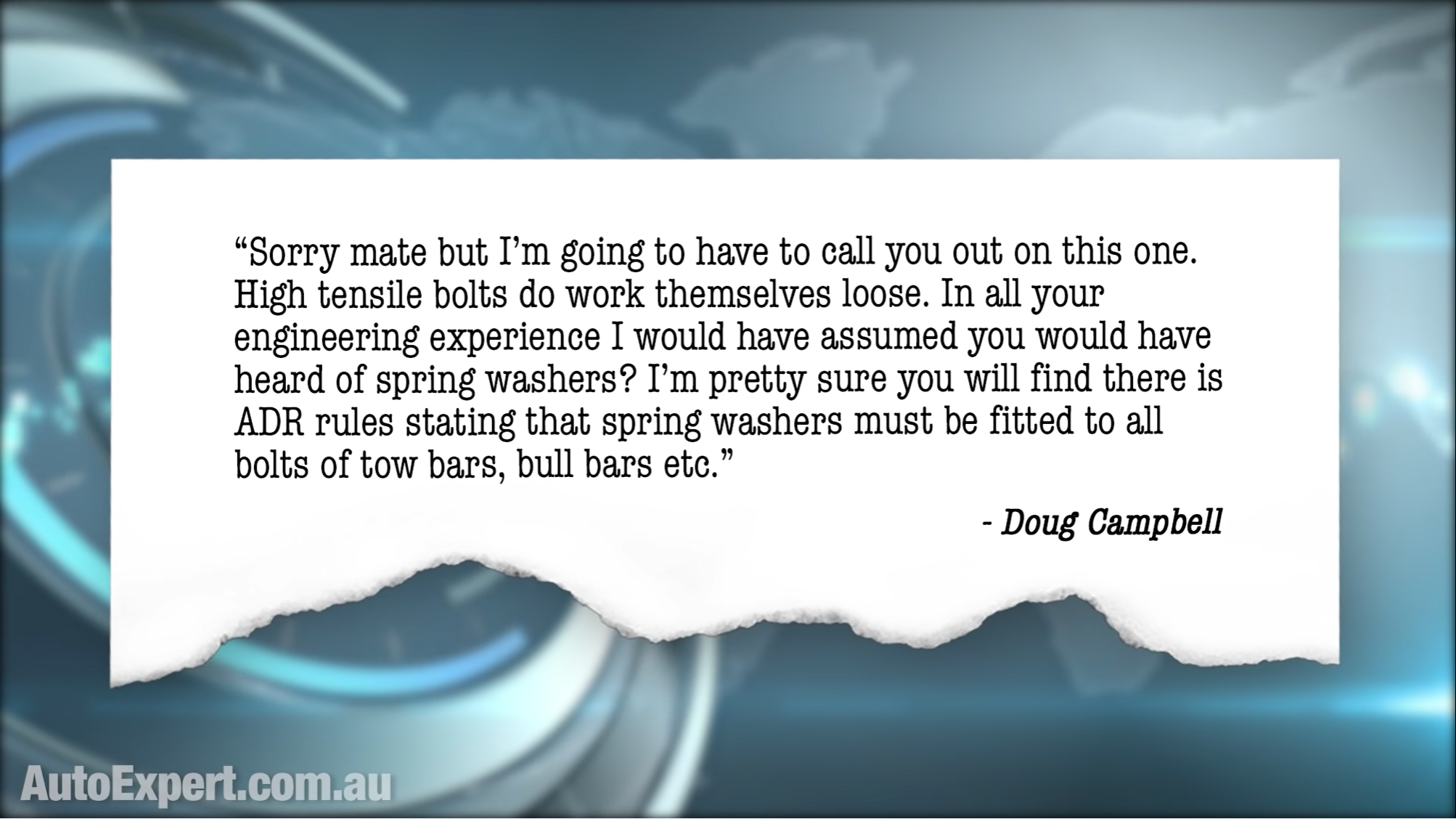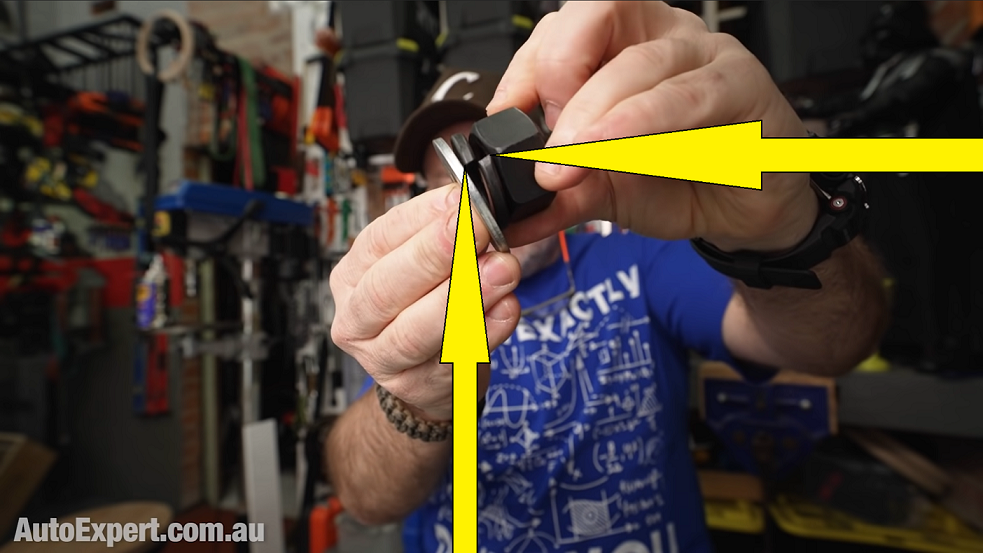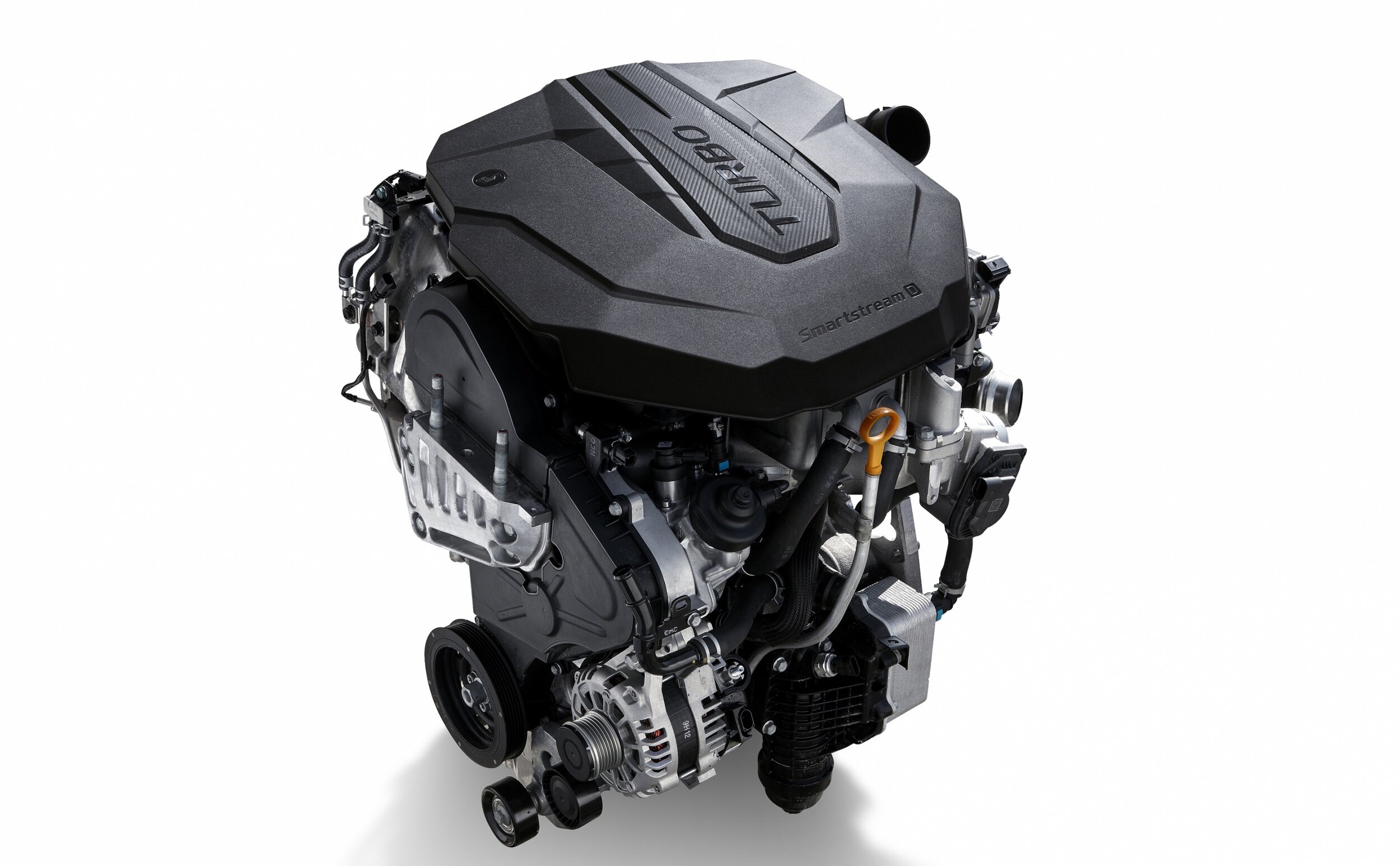The applied physics of high tensile bolted joints and assembly in cars
The full physics deep-dive into hi-tensile bolted joints. If you’ve ever wanted to bolt-up anything serious, this is the report for you…
This report is the beer garden physics on hi-tensile bolts - how they work, why they fail and how to be safe in real-world situations.
This is Part II, essentially, stemming from my recent report into a dealer-fitted towbar bolt failure caused by poor installation owing to not being tightened correctly.
The Ranger in question had an ARB rear towbar fitted and essentially it cracked the bottom edge of the back of the chassis rail because, clearly in the photographs, the bolts just weren't done up properly. They were never done up properly.
Despite being in service for three years and only towing an 800 kilo trailer and despite having two or three services (where one of the jobs the customer specifically paid for was to have the chassis bolts checked and “tightened”), it didn't actually work out that well.
This raised some very robust conversation in the comments, in particular, from Doug:
We respectfully disagree, Doug, and here’s why - let’s set the record straight.
With ADR rules yeah, there are compliance regulations for towbars, because we don't want a bunch of DIY backyarders out there dodging up their own towbars in the shed, then bolting them up and sailing down the highway with three and a half tons attached.
That's not going to end well.
There are compliance requirements, but interestingly, they are performance specifications. For example, there's no requirement to have airbags in a car, but there's a requirement about the crash performance and in practice it's impossible to meet the crash performance of the hominin dummy without having airbags. But if they come up with some other miraculous method they can do that instead.
What they do with towbars in practice, during the certification testing, is they do lots of static load testing on tow bars and if you pass, your design gets certified (and there's no way around this).
So, to test your hypothesis that spring washers must be fitted to tow bars, I had a look at a bunch of tow bars.
This is the included parts page in the assembly instructions, for the Trailboss towbar for a Ford ranger PXII and Mazda BT-50 cab-chassis. If you download this document, you can see clearly there's an item here for the washers and they're all M12 flat washers, and there are no spring washes whatsoever referenced in this diagram, even though there is a compliance plate and this towbar has been tested.
Here is the Uneek 4x4 Ranger/BT-50 towbar - same thing. There's the M12 flat washers again, and no spring washes referenced.
Here's Hayman Reese, possibly the most familiar name to Australian vehicle owners when it comes to towing. Same M12 flat washers, all 20 of them - 10 bolts, 20 washers - no spring washers.
You’re free to confirm what I'm saying by clicking the links.
My AutoExpert AFFORDABLE ROADSIDE ASSISTANCE PACKAGE
If you’re sick of paying through the neck for roadside assistance I’ve teamed up with 24/7 to offer AutoExpert readers nationwide roadside assistance from just $69 annually, plus there’s NO JOINING FEE
Full details here >>
AutoExpert DISCOUNT OLIGHT TORCHES
These flashlights are awesome. I carry the Olight Warrior Mini 2 every day - it’s tiny, robust, and super useful in the field or in the workshop. Olight is a terrific supporter of AutoExpert.
Use the code AEJC to get a 12% discount >>
Hi-Tensile Fastners VS Spring Washers
Doug continued:
Correlation is not causation, Doug.
I’m inferring Doug is a mechanic here, and with great respect: mechanics do good work and it's a very high consequence job if you get something basic wrong. Tens of thousands of mechanics do excellent work every day keeping us moving.
If you forget to tighten up that sump plug or fail to tighten all the head bolts up correctly, or you miss a conrod bolt in an engine rebuild - the consequences are profound, and profoundly expensive.
I'm not having a shot at Doug about being strict on registration inspections either, because safety inspections of vehicles are important - we don't want dangerous vehicles driving around.
But in this case, spring washers do not help and there's a couple of pieces of evidence about that.
Plenty of documentation online refers to the design of high tensile joints and they don't say to use spring washers.
Why? Because spring washers don't help. Take an M25 hex head cap screw, it’s a set screw and comes with two flat washers.
Here’s a spring washer.
Here's the beautifully precise high tensile fastener, the nut for which fits together so nicely.
The spring washer is a misnomer, actually, because it's less of a spring and much more of a counter rotation chisel type device and it's not meant to be used with a high tensile fastener.
You can certainly get spring washes for M25 fasteners, no problem, but what happens is that broken section in the spring is what the nut tries to use to counter rotate and avoid undoing itself in service.
But this leading edge of the spring washer acts like the face of a chisel and attempts to bury itself into the nut and at the same time, the other chisel edge attempts to bury itself into the washer and prevent any relative rotation between those parts.
Those two edges of the spring washer are chisels and they attempt to deal with counter rotation but they're not that useful in the high tensile job because a bloody strong spring washer is a piece of very serious steel, but with my fencing pliers I can essentially flatten it straight out. That's a few tens of kilos worth of grip - they don’t offer much spring.
With an M12 fastener, when you torque it up, like the grade 8.8 fasteners in the cracked towbar report, they carry about four tons of clamping force. The nut is already being clamped onto the job with four tons of clamping force, which is more than enough counter rotation, owing to ‘Mu’, which is the coefficient of friction between the nut and the job.
That's much more than a spring washer could manage.
Not all engine and associated bolts are torque-to-yield bolts. There'll be advice in the manual about assembly, but if you wanna know more about Torque-to-Yield bolts, watch my report here >>
In short, you use a torque wrench and do the bolt up to some pre-set torque spec, let's say it's 75 newton meters, there will be advice in the manual to then rotate the bolt through some further angular displacement.
This additional movement is designed to go past what's called the ‘yield point’ on the material stress strain curve for the metal. It delivers a higher clamping force, using a smaller and lighter fastener.
The advantages of TTY bolts are they're smaller and that means in a complex part, like a cylinder head, you've got more room for water passages, ports, oil galleries etc, without needing as many holes, nor do they need to be for the fasteners.
Using lighter fasteners is often better, but TTY bolts and high tensile bolts essentially do exactly the same thing - they stretch to deliver a designed amount of clamping force to hold highly stressed parts together.
A torque to yield bolt is no more an inbuilt spring washer than a high tensile bolt. They look pretty small, but they hold immense amounts of clamping force.
A torque to yield bolt will sustain such force that you can never reuse them once they've been tightened up, because when it deforms (it yields) plastically, past the yield point on the stress-strain curve. In the plastic domain, you reduce the torque and you let the load off the system, it releases itself again, but it doesn't return to the same unstressed position.
If you un-tighten torque to yield bolts, put them in the bin because they cannot be used again.
The main disadvantage with TTY bolt is the cost because the material spec is pretty high, the complexity of assembly is up there, you've got to get the torque correct, and you have to measure the angle - 15 degrees, 20 degrees, 30 degrees, or 60, whatever - because that's critical. And it adds to the time cost of doing the repair job. Then they go in the bin.
Firstly, let’s lose the spring washer fascination as discussed previously.
There’s this principle called the stress strain curve for steel.
Very simply, it really just means load and displacement; in the case of a bolt it means clamping force and stretch, because you don't get one without the other. They go together - you don't get the clamping force in any bolt without stretching it to some degree.
The torque is set to deliver a degree of stretch. That stretch is clamping force, because stress equals strain.
It’s a small but significant degree of stretch. You could measure it with a dial indicator.
Engineers start with the clamping force required to keep the parts together. Then they design the bolts around that.

























The Mazda BT-50 is more than just an Isuzu D-MAX clone. It can tow, carry and transport with relative ease, but it’s also great value and offers a premium interior - for a ute.